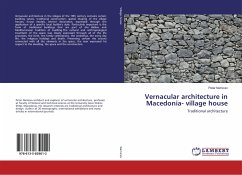I. Introduction- Brief overview of Yemen's history and culture- Importance of Yemen's architectural heritage- Purpose and scope of the bookII. Vernacular Architecture of Yemen- Definition of vernacular architecture and its characteristics- Examples of vernacular architecture in Yemen- Use of local materials and construction techniques- Adaptation to environmental conditions- Examples of mosques, fortresses, and palacesIII. Challenges to the Preservation of Yemen's Architectural Heritage- Ongoing conflict and destruction of historic buildings and sites- Displacement of people and loss of traditional knowledge and skills- The need for conservation and restoration effortsIV. Supporting the Preservation of Yemen's Architectural Heritage- Training of local experts in conservation and restoration techniques- Creation of digital archives- Support of local cultural organizations- International initiatives led by organizations such as UNESCO and the World Monuments FundV. Traditional Crafts and Skills in Yemen- Overview of traditional crafts and skills in Yemen- Examples of pottery, weaving, metalwork, and woodworking- Other traditional crafts and skills in Yemen, including basket weaving, leatherwork, stone carving, and calligraphyVI. Supporting Traditional Crafts and Skills in Yemen- Training and support for artisans- Promotion of the use of traditional materials and techniques- Economic opportunities for communities that rely on traditional crafts and skillsVII. Yemen's Cultural Heritage Beyond Architecture and Crafts- Overview of other aspects of Yemen's cultural heritage, including literature, music, dance, theater, cuisine, traditional dress, and festivals- Influences of ancient trade routes and Islamic scholarship and learning on Yemen's cultural heritageVIII. Conclusion- Summary of the importance of preserving Yemen's cultural heritage- Call to action for supporting preservation efforts- Final thoughts and reflections on Yemen's unique and valuable cultural legacy
Bitte wählen Sie Ihr Anliegen aus.
Rechnungen
Retourenschein anfordern
Bestellstatus
Storno









